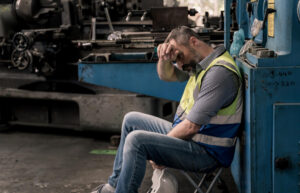I – INTRODUCTION
In a highly competitive capitalist model such as the one we have today, the development and success of companies is closely linked to the ability to stand out in the market, to be seen and chosen among all the options offered to consumers. Because of this, companies work hard on advertising projects and campaigns, with the aim of establishing visual identifications with the general public.
In this context, distinctive signs play a fundamental role in business activity and the economy, precisely because they are the final communication link between the producer and the consumer, making it possible to identify and differentiate between companies and recognize the origin of a product or service.
Among the distinctive signs of a company, we have the trade dress, an institute that originated in American jurisprudence, translated by Brazilian doctrine as “image set”. Although it has no specific legal provision in the Brazilian legal system, it often represents a potential source of profits and is an extremely important element of the business, which is why it deserves and can be legally protected.
II – CONCEPT AND CRITERIA FOR PROTECTION
Trade dress consists of the total image of the business; it is the means by which the product or service is presented on the market, it is the “look and feel” of the business.1
In more detail, we can say that trade dress consists of the visual identity of a given product, service or establishment, i.e. the set of its particular and essential characteristics, developed to differentiate it from the competition and help it to be identified by the consumer looking for it, avoiding unintentionally mistaken choices. These characteristics include forms of presentation or arrangement of content, packaging, textures, graphics, designs, color or combination of colors, as well as elements peculiar to a business establishment, such as architectural design, decoration style, external and internal appearance, employee uniforms and even the odor pattern of the environment.
Usually, trade dress has such unique characteristics that the consumer can immediately identify which product or establishment it refers to, which is the case, for example, when we enter any McDonald’s, Outback or Livraria Saraiva franchise store. The layout of the furniture, decorative elements, colors, as well as the operational configuration of the store itself leave no doubt as to which establishment it is.
In order for the whole image to acquire such importance and be protected against undue imitation, a number of requirements must be met2, namely:
a) Distinctiveness: the trade dress must have the ability to identify and differentiate the company’s commercial establishment/product/service from those already on the market, and this distinctiveness can be original (when the image set has an inherent originality, i.e. when it is sufficiently different from the other image sets of competitors and/or does not use any common characteristics in the segment) or secondary (acquired over time, when the public starts to identify and recognize it regardless of its lack of originality);
b) Non-functionality: the characteristics of the image set cannot simply be useful or essential to the use or purpose of the product; and
c) The similarity between the sets of images must be capable of causing confusion, association or connection between the companies, which must be analyzed as a whole, and not element by element, in addition to taking into account the low level of attention of the public when purchasing their products and services, remembering that the consumer keeps in his memory only a few characteristic features of the products, which is why the analysis must be based on the similarities between them, and not on the differences individually considered, as already decided by the courts3.
III – FORMS OF PROTECTION
Considering that trade dress has no specific provision in the Brazilian legal system, it is necessary to check how it will be protected if other companies unduly imitate it in order to take advantage of the success of others.
Firstly, the protection comes from the Federal Constitution, which in article 5, item XXIX4, guarantees the protection of industrial creations, trademark ownership, company names and other distinctive signs, and trade dress can be perfectly included in the latter category.
As far as protection based on infra-constitutional legislation is concerned, there are two types of protection: the rules on repression of unfair competition and the protection of intellectual property institutes: trademarks, industrial designs and copyrights.
It is important to clarify, as has been decided by the courts5, that these different protections are not mutually exclusive, but rather compatible. Therefore, violation of the trade dress of a competitor’s product constitutes unfair competition, even if its characteristic elements are separately protected by intellectual property rights.
With regard to copyright protection, it can be used when the creation is artistic and original, which will apply to architectural works and designs (such as building façades, store interiors or restaurant layouts), websites, as well as engravings and drawings applied to certain products or services.
In cases where the trade dress consists of the ornamental plastic form of an object, it can also be protected by industrial design registration. Furthermore, protection can also be given via trademark law, by registering a mixed or three-dimensional trademark with the INPI (National Institute of Industrial Property).
The fact is that if the trade dress meets the peculiarities of the intellectual property institutes, its protection tends to be faster and more effective, precisely because the specific legal provisions themselves bring greater legal certainty, which increases the chances of judges ruling in favor of the owner of the violated trade dress.
However, regardless of the protection granted on account of these exclusive rights, the repression of unfair competition is the main mechanism for combating the undue reproduction of trade dress, regardless of registration or any other formality6.
Unfair competition can be detailed as the practice of acts that are contrary to the conduct usually observed in the context of competitive relations, in other words, acts practiced in excess of the limits of freedom of competition that is guaranteed to economic agents, and which may cause damage to the business of others.
Therefore, any act by someone who, through no effort of their own, appropriates or takes advantage of a competitor’s fame, is subject to being framed as a practice of unfair competition7, since many articles have a particular appearance and the most important of these characteristics are instinctively fixed in the memory of consumers, who will purchase the product simply by seeing it.
In this respect, the protection of trade dress can be based on the open-ended criminal type provided for in article 195, item III, of the Industrial Property Law8, which states that:
Art. 195 – A crime of unfair competition is committed by anyone who:
(…)
III – employs fraudulent means to divert, for their own benefit or for the benefit of others, the customers of others.
It is important to point out that in order to characterize fraud, it is not necessary to make an exact and faithful copy; imitation that is capable of confusing is enough.9
Therefore, in an objective and summarized manner, we can describe that the “detour of customers by fraudulent means” in the field of trade dress, occurs as follows: there is an image set with sufficient distinctiveness and recognized by the public; and a third party, a competitor of the owner, reproduces or imitates the original trade dress in such a way that the consumer, already accustomed to the existence of the original trade dress, upon verifying the existence of another identical or similar image set, will be induced to confusion or make an undue association between the products/services.
IV – CONCLUSION
The repression of unfair competition is the ground most commonly used by the owners of trade dresses in lawsuits involving trade dress infringement; and as many of these decisions are favorable, we conclude that even without specific provision in the legal system, the losses suffered by the owner of the improperly reproduced trade dress are not without reparation.
Marcos Martins Advogados is qualified and available to deal with questions and doubts about trade dress and the ways in which it can be protected.
1 SOARES, José Carlos Tinoco. “Unfair competition” VS. ‘Trade Dress’ and/or ‘Set-Image’. São Paulo: Ed. Do Autor, 2004, p.209.
2 TEIXEIRA, Cassiano Ricardo Golos. Unfair Competition: Trade Dress. IBPI Electronic Magazine. Revel – Nr. 1, 2009, p. 08
3 Appeal No. 0102825-96.2012.8.26.0100, 2nd Chamber Reserved for Business Law of the São Paulo Court of Justice, October 31, 2017.
4 Art. 5, CF/88: All are equal before the law, without distinction of any kind, and Brazilians and foreigners residing in the country are guaranteed the inviolability of the right to life, liberty, equality, security and property, under the following terms: XXIX – the law shall ensure to the authors of industrial inventions a temporary privilege for their use, as well as protection for industrial creations, trademark ownership, company names and other distinctive signs, with a view to the social interest and the technological and economic development of the country.
5 Interlocutory Appeal no. 2045767-76.2013.8.26.0000, 2nd Chamber Reserved for Business Law of the São Paulo Court of Justice, June 16, 2014.
6 Appeal No. 0004984-09.2014.8.26.0108, 2nd Chamber Reserved for Business Law of the São Paulo Court of Justice, 01/11/2017.
7 ANDRADE, Gustavo Piva. Trade dress and the protection of the visual identity of products and services. Revista da ABPI, Rio de Janeiro, n. 112, May/June 2011, p. 07.
8 Law No. 9.279, of May 14, 1996.
9 SOARES, José Carlos Tinoco. “Unfair competition” VS. ‘Trade Dress’ and/or ‘Set-Image’. São Paulo: Ed. Do Autor, 2004, pg. 196







